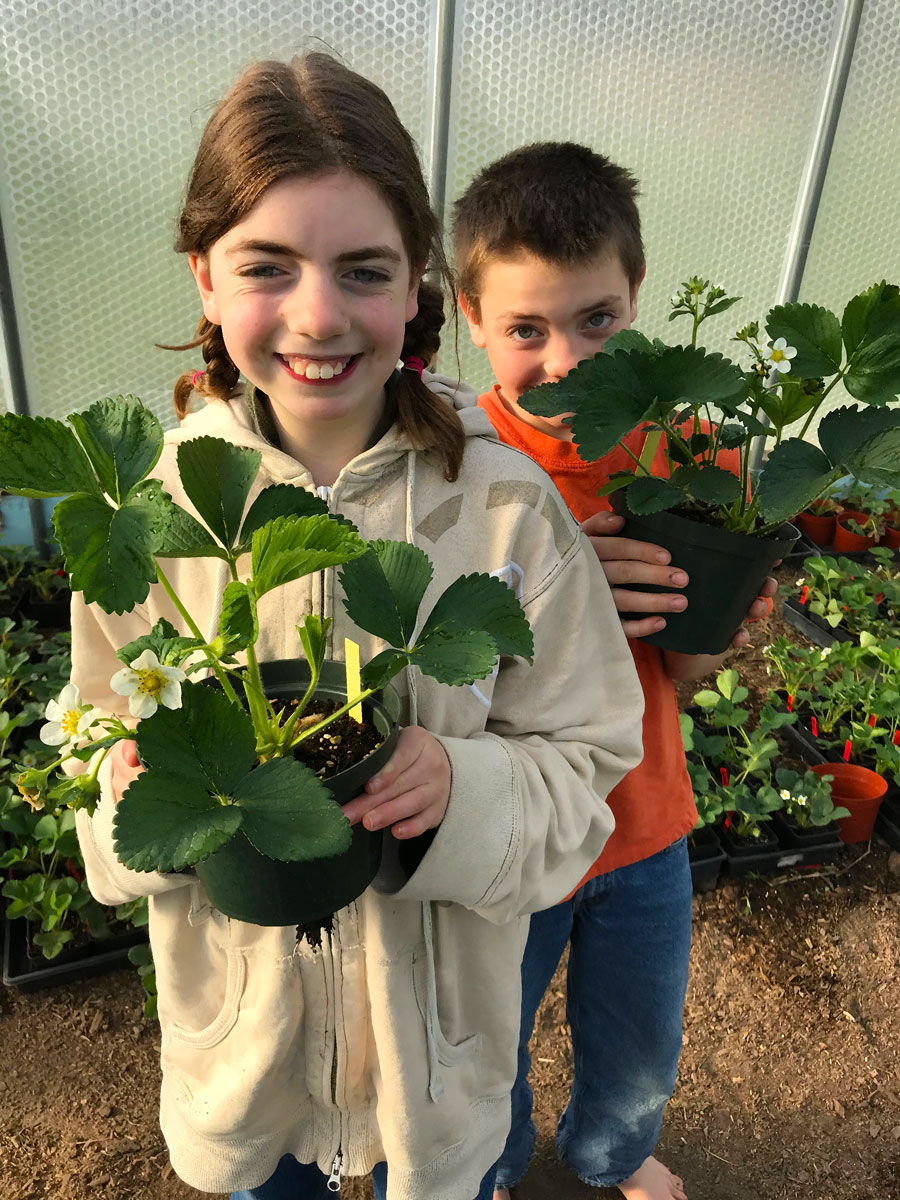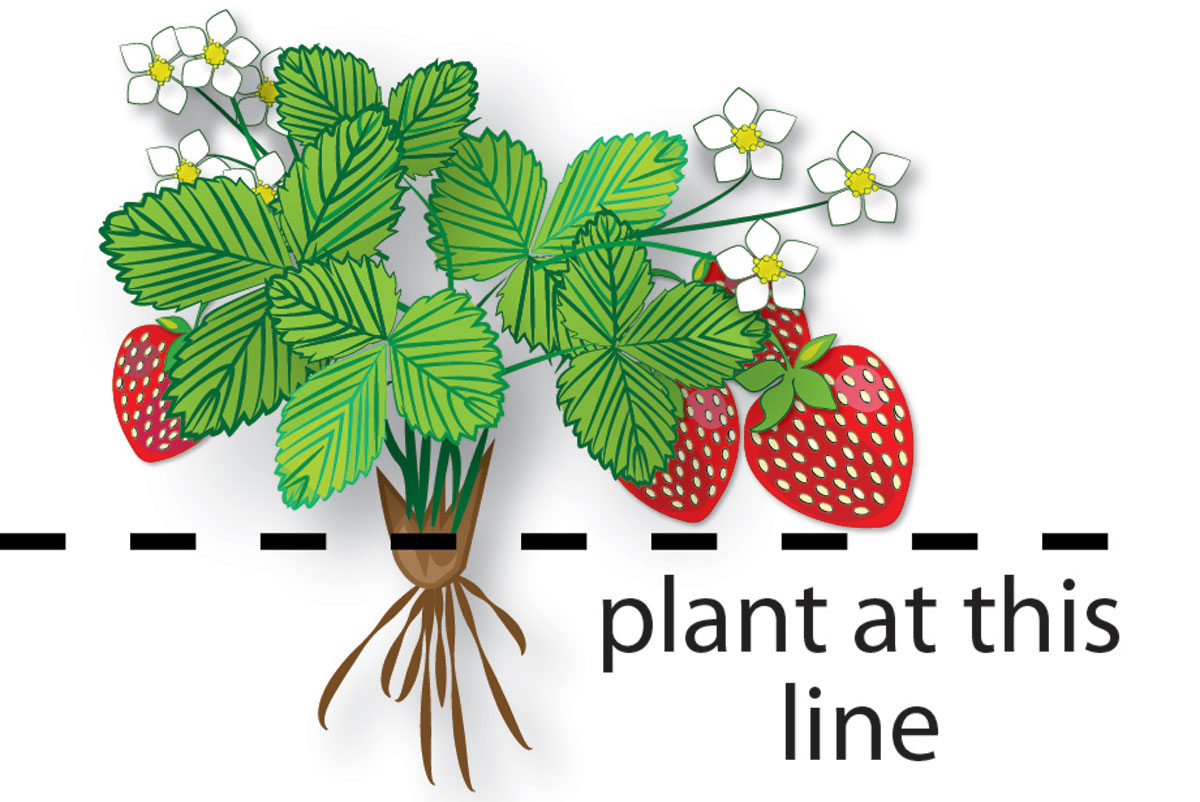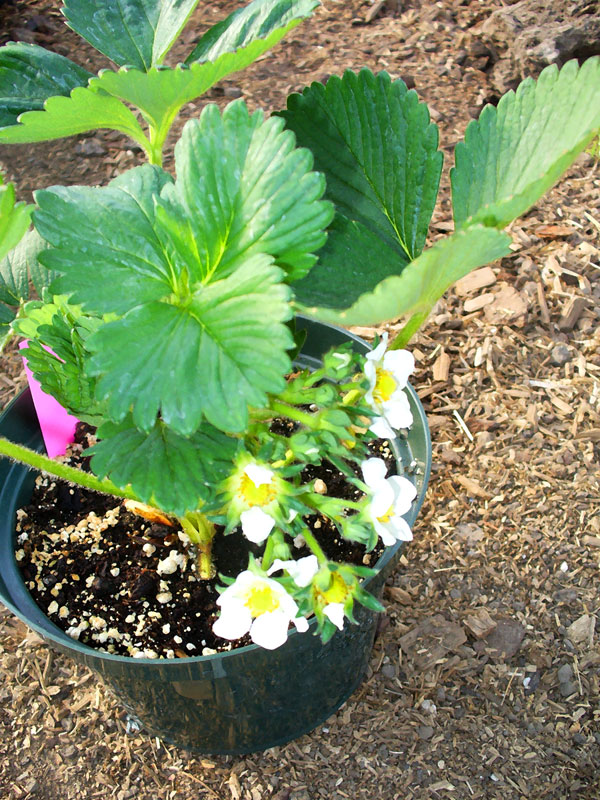How to Grow Organic Strawberries
You can grow strawberries successfully in a garden, raised bed, or container. A little work now will result in delicious berries later. Imagine eating strawberries fresh from your own garden. You can easily freeze strawberries and have them year around too.
Our strawberry plants are hand potted by Annabelle and Ollie, who also help care for the berries! You might see them selling their strawberry plants at the Moscow Farmer's Market this year. They are learning small business entrepreneurship at the same time that they master organic farming. Ollie and Annabelle are great farmers and we are delighted to have them to help.

Growing Strawberries
Select healthy strawberry plants that will survive in your climate.
There are many varieties of strawberries. We selected older heirloom varieties that are proven producers to grow at Plow Makers Farms. So far the plants have done extremely well here in the Palouse region.
Decide how long you want to wait for berries.
Smaller strawberry starts will need a season to grow roots before producing large amounts of berries. Our fully rooted strawberries plants will produce tasty strawberries this year.
Choose a good planting place.
Strawberries like a sunny site free of perennial weeds like Canadian thistles. You don't want to try to pick strawberries surrounded by thistles either. Strawberries also grow great in pots, containers and raised beds.
How to prepare the soil for strawberries.
Strawberries like fluffy soil that is rich in organic matter and well drained. They also prefer slightly acidic soil (pH 5.5-6.5).
Strawberries hate soggy or marshy soil and dense clay type soil.
If you have really poor or extremely dense clay soil, you may want to plant your strawberries in a pot or raised bed.
Otherwise, you can amend clay soil by adding organic matter to help loosen up the soil. Never add sand to clay soil since this makes concrete.
Strawberry plant spacing.
Space plants in gardens or raised beds 12-18 inches apart (from the center of the plant). More vigorous plants will need to be further apart. Plants in containers can be planted as close as 8 inches apart.
How to plant strawberries.

When planting, cover the roots but be sure that the soil does not cover the plant's crown. The crown is the base of the plant where the green leaves are sprouting.
Strawberry plants can rot if their crowns are covered.
Watering your strawberries.
Keep strawberry plant roots moist but not soggy. Too wet can rot strawberries.
Protect from frost, slugs, deer and birds.
You may need to protect newly planted strawberries from the elements and animals. In general, strawberries are pretty tough but it pays to take a few things into account.
Newly planted strawberries may need protection from extreme cold or odd weather changes. Frost cloth or sheets can work for temporary protection from cold nights.
Deer and birds love strawberries! Deer will pull up and eat strawberry plants while birds prefer to harvest your berries just before you do! A net over the plants can discourage pesky critters from eating the berries and plants. If you put up a net, make sure to check it daily to make sure birds do not get caught in it.
Another option is to put small red painted rocks around the strawberries early in the season before the real berries arrive. Birds are fooled by the rocks, peck them and decide they are not food. Later the winged berry eaters leave the real berries alone. Warning: this may work only with less intelligent birds; some birds are pretty smart.
Watch out for slugs and snails which can hide in mulch during the day and chew on your berries at night. Often you can collect these slimy critters by putting a board or two down in the plant bed. If you keep the underside of the board moist slugs and snails will hide there to be collected by you later. There are also snail and slug traps.

Harvest strawberries.
Pick strawberries in the evening and refrigerate right away (if any are left after you pick and sample them).
Strawberry runners.
Strawberry plants multiple through runners (small plants attached to the mother plant by a stem). Making and supporting runners takes a lot of energy from the mother plant. Pinching off runners if you don't need more plants will increase berry production and size.
Renovating strawberry beds.
For the best harvest, renovate strawberry beds after they finish fruiting.
Pull all weeds and grass. Thin strawberry plants to 6-8 inches apart depending on the variety size. Cut back old leaves 4 inches from the ground (some people mow large strawberry beds four inches high). Feed the plants with a balanced organic fertilizer and top with a 0.5-1 inch of weed free compost or organic mulch.
How much can strawberry plants produce?
A good bed of strawberry plants can produce around 1 pound of berries per square foot if it is taken care of correctly. For example, you could harvest 20 pounds of fresh strawberries from a 20 square foot bed (4 ft. by 5 ft.).
Most strawberry plants produce heavily for three to four years. To keep the berries rolling, replace older plants with younger plants at intervals.
